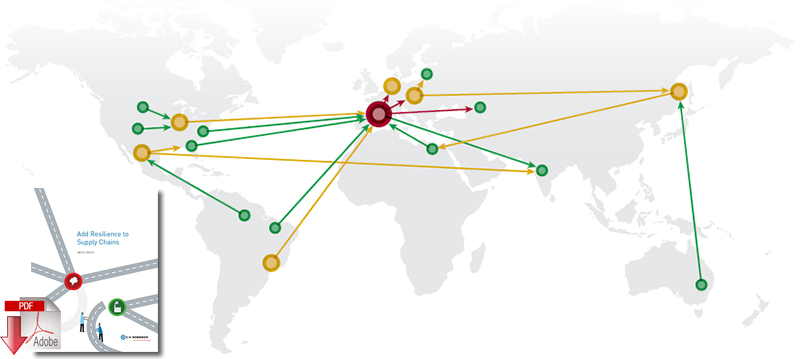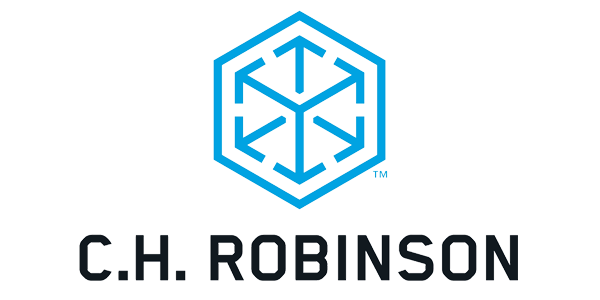Measuring Supply Chain Detection Time Performance

Globe-spanning supply chains are now exposed to a wider array of risks than ever before, elevating the importance of detection time as a measure of performance.
There are many ways to measure supply chain performance in terms of resilience, but there is one that’s easily overlooked even though it is gaining in importance: Detection time.
By that I mean the time measured from the instant a company realizes it will be hit by a supply chain disruption to the time the incident actually takes place.
In other words, the amount of warning time during which the company can prepare for and mitigate the disruption.
Globe-spanning supply chains are now exposed to a wider array of risks than ever before, elevating the importance of detection time as a measure of performance.
It can be practically zero - as is the case with earthquakes and fires - or even negative, when a disruption is detected after the event.
Examples of the latter include a latent product defect that wreaks reputational damage, or a cyber bug that steals company secrets.
Companies that are quick at detecting supply chain disruptions are more competitive than slower enterprises in a number of ways.
For instance, when a disaster such as a hurricane, a labor strike, or a bankruptcy disables key suppliers, quick-moving enterprises are able to lock in alternative sources of supply before their rivals.
As I explain in my book, The Power of Resilience: How the Best Companies Manage the Unexpected (MIT Press, October 2015), companies can improve their disruption detection capabilities in a number of ways.
Watching the weather is one option. Managing adverse weather conditions is part and parcel of transportation planning. However, the number of extreme events appears to be on the rise, and companies are becoming more sophisticated weather watchers. A major freight company employs a team of meteorologists that works closely with its flight dispatchers and contingency coordinators, for example.
There is growing interest in incorporating weather forecast data from a variety of sources into supply chain planning.

Perhaps the most important survival recommendation is to prepare to talk to upper management about the transportation budget. You can get some ideas for these conversations by downloading the White Paper “Add Resilience to Supply Chains”
Of course, weather represents only one corner of the supply chain risk universe, and companies have to be vigilant on multiple fronts.
Rather than attempt to keep track of all possible disruptive events worldwide, many enterprises subscribe to event monitoring services that collect incident data, analyze the severity, and relay selective alerts to clients.
In a representative week, one such service, NC4, might issue 1,700 alert messages covering 650 events around the world. Many are localized, such as a political demonstration or a small plane crash, but companies can still be affected by, say, road closures or suppliers in the area that are locked down during the incident.
Most alert software tools offer customization, allowing companies to specify alert thresholds for each type of facility based on event severity and distance from the facility. Moreover, a new class of software applications goes further by combining companies’ bill of material and supplier facility locations to convert alert data to information regarding products and customer impacts.
Companies can then prioritize their mitigation efforts based on parameters such as value-at-risk, customer importance, and field inventory.
Cisco built such an incident management dashboard internally to detect potential disruptions to the top products that account for most of the company’s revenues. Some companies have developed internal monitoring systems that track the status of assets over extremely wide areas.
Walgreens uses in-store sensors to monitor each of its 8,300 locations in the United States. The raw data flows to Walgreens’ Centralized Security Operations Center. Electrical power sensors transmit power blackout alerts, enabling the organization to take action to prevent spoilage of temperature-sensitive products. Walgreens estimates that this system saved it $3.6 million in perishable goods in one year.
Keeping an eye on changes in government policies is another important detection activity, which often falls under the umbrella of a centralized corporate function such as Legal or Compliance. Shifts in government policy can be immensely disruptive, especially when they occur with little or no warning. In 2009, the United States boosted import duties on Chinese tires from 4% to 35%, and did so with only 15 days’ notice. Tires that left Chinese ports in early September instantly became one-third more expensive during the ocean transit across the Pacific.
But even watchful companies can still miss the potential impact of a disruption. When Cisco saw news of wildfires in Colorado in 2012, it wasn’t concerned, because it had no manufacturing or suppliers in the area. What the company missed, however, was that the fire affected its call centers.
Any alert system causes the company using it to face a classic response trade off between two types of detection-error risks. An oversensitive detection system can generate false alerts on benign events too often; an under sensitive one can be too late to recognize important disruptions. Consequently, these systems are typically coupled with alert escalation protocols that allow for human judgment in the assessment of the information.
Companies that achieve the right balance between these two detection-error extremes benefit from a competitive advantage that will increase in value as the likelihood of disruptions to global supply chains increases.
Related: Understanding Supply Chain Resilience

Article Topics
C.H. Robinson News & Resources
Q&A: Mike Burkhart on the Recent Nearshoring Push Into Mexico Q&A: Mike Burkhart, VP of Mexico, C.H. Robinson C.H. Robinson introduces new touchless appointments technology offering C.H. Robinson President & CEO Bozeman provides overview of key logistics trends and themes at SMC3 JumpStart 2024 C.H. Robinson touts its progress on eBOL adoption by LTL carriers and shippers Retailers Pivot Supply Chain Strategy, Seek Red Sea Alternatives C.H. Robinson announces executive hire to run new Program Management Office More C.H. RobinsonLatest in Supply Chain
Microsoft Unveils New AI Innovations For Warehouses Let’s Spend Five Minutes Talking About ... Malaysia Baltimore Bridge Collapse: Impact on Freight Navigating TIm Cook Says Apple Plans to Increase Investments in Vietnam Amazon Logistics’ Growth Shakes Up Shipping Industry in 2023 Spotlight Startup: Cart.com is Reimagining Logistics Walmart and Swisslog Expand Partnership with New Texas Facility More Supply Chain











